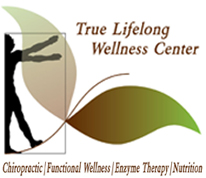713.974.0300
Gluten
Gluten
Within the last few decades, gluten has become a major health concern not only to those individuals that are genetically predisposed to react against it (Celiacs) but to yet a much larger group of people that are intolerant to it. People that have a problem with gluten notice that when consumed they can experience chronic fatigue, stiff joints, muscle aches, cold sores, gas and bloating, constipation, diarrhea, headaches, and the list can go on and on.
diarrhea, headaches, and the list can go on and on. gluten is a protein found in grains such as wheat, barley, rye, and triticale. For people that are either Celiac or intolerant, it shouldn’t be difficult to avoid gluten if they just didn’t consume grains that contain it but it’s not that easy. You see, it is commercially used to give foods texture as it is like a glue that holds food together.
Used to give foods texture as it is like a glue that holds food together. Often times it comes hidden by different names like ‘modified food starch’ or ‘hydrolyzed vegetable protein’ just to name a few or it isn’t even labeled if the food contains less than 20 parts per million. It is for these reasons that avoiding it is nearly impossible and going ‘gluten free’ usually doesn’t solve the problem people have against it.
I often wondered, “if bread has been around for thousands of years then why now are people reacting against gluten?” Well after some research it was evident that the bread eaten thousands of years ago is not the same as the bread eaten today. For example, bread should be made with water, yeast, flour, and salt that’s it! Take a look at a loaf of bread in the supermarket and look at the ingredients to see if all they used was water, yeast, flour, and salt. NOPE!! It is usually made with bleached flour which contains chemicals like acetone peroxide, chlorine, and benzoyl peroxide (this is used to treat acne) and are masked under the term ‘bleached.’ So as you can see, what we think is bread is really not bread. It’s like taking a glass of water, adding lemons and sugar to it and calling it water. It’s not water, it’s LEMONADE!!! Another little ingredient is an additive called “vital wheat gluten” used to strengthen the dough and help the loaf rise. Vital wheat gluten is a powdered and concentrated form of the already found gluten in bread.
found gluten in bread. It is made by washing wheat flour with water until the starches dissolve. Companies add ‘vital wheat gluten’ as extra gluten to their dough to provide the strength and elasticity necessary for it to endure the process of commercial mixing. This powdered concentration increases shelf life and acts as a binder and because of its versatility, the food industry has added it to bread, pastas, snacks, cereals, and crackers to name a few. It is also used as a thickener in thousands of foods and cosmetics. It’s all storage and functionality with no flavor. It is no surprise many people are finding themselves becoming intolerant to gluten and probably not just the gluten but the junk used to process the foods as well. At True Lifelong Wellness Center, we test to identify for antibodies against the gluten molecule and then educate our patients on what it truly means to be ‘gluten free’.


